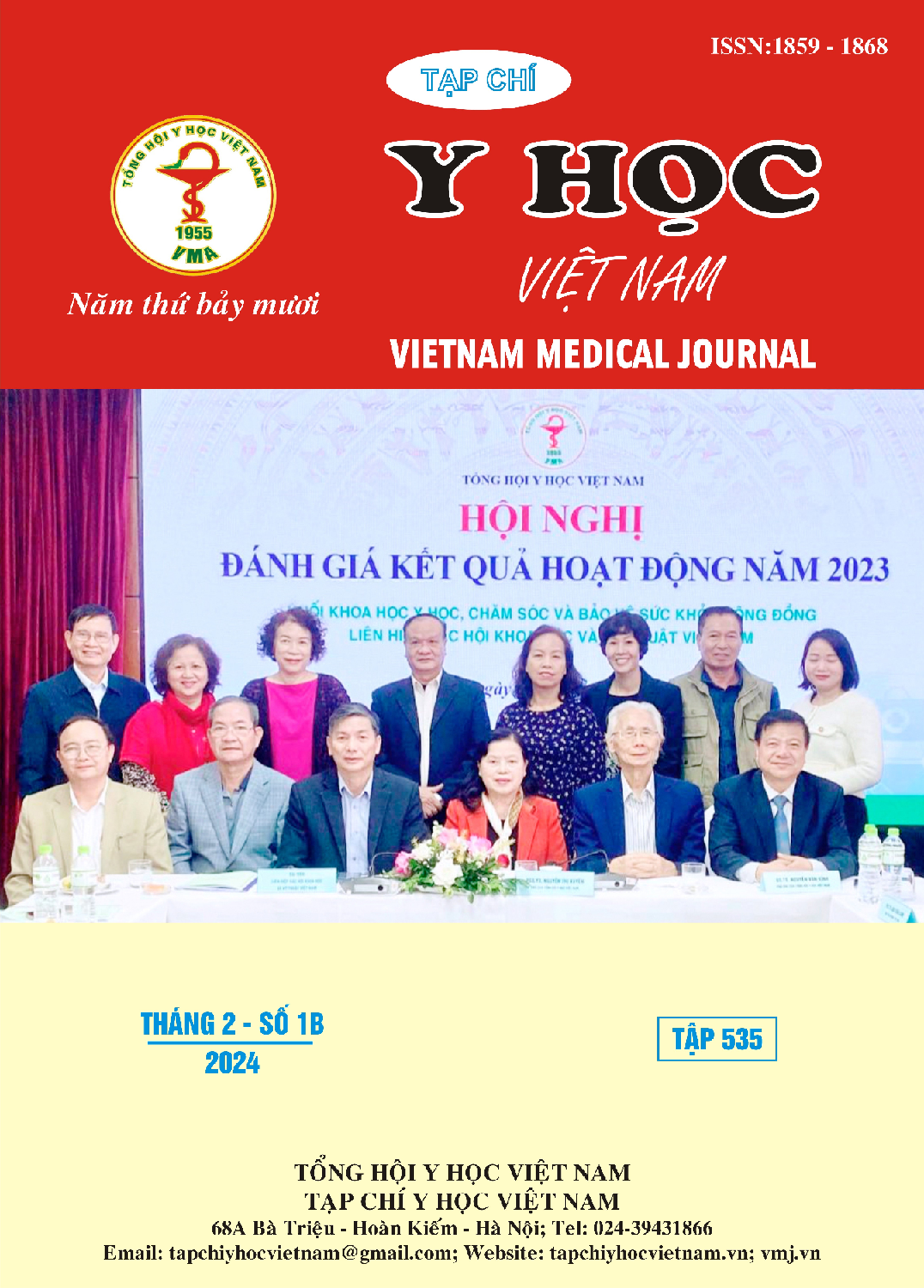SOME FACTORS RELATED TO RESTLESS LEGS SYNDROME IN INTRACEREBRAL HEMORRHAGE PATIENTS
Main Article Content
Abstract
Objectives: To investigate some factors related to restless legs syndrome in patients with Intracerebral hemorrhage (ICH). Subjects and methods: prospective study 186 patients with ICH at the Stroke Department, Military Hospital 103 from September 2022 to September 2023. Results: the RLS rate was 8.6 % at 31 ± 7.6 days. Smoking, family history of first-degree relatives with RLS, high BMI and NIHSS score, basal ganglia bleeding related to RLS after stroke. In that, BMI over 22.12±2.10 (OR: 1.279; 95%CI: 1.028-1.590; p =0.027) and ICH in basal ganglia (OR: 2.734; 95%CI: 1.669-11.164; p =0.038) was independently associated with RLS after stroke. Conclusion: RLS occurs in 8.6% after hemorrhagic stroke. Smoking, having relatives with RLS, high BMI, basal ganglia damage related to RLS after stroke. Among them, high BMI and basal ganglia damage are independently associated with RLS.
Article Details
Keywords
Intracerebral hemorrhage, restless legs syndrome, basal ganglia, BMI, stroke sequelae
References
2. Allen R.P., Picchietti D.L., Garcia-Borreguero D. et al (2014), "Restless legs syndrome/Willis-Ekbom disease diagnostic criteria: updated International Restless Legs Syndrome Study Group (IRLSSG) consensus criteria--history, rationale, description, and significance", Sleep Med, 15(8), pp. 860-73.
3. Dhawan V., Ali M., Chaudhuri K.R. (2006), "Genetic aspects of restless legs syndrome", Postgrad Med J, 82(972), pp. 626-9.
4. Schlesinger I., Erikh I., Avizohar O. et al (2009), "Cardiovascular risk factors in restless legs syndrome", Mov Disord, 24(11), pp. 1587-92.
5. Han S.H., Park K.Y., Kim J.M. et al (2019), "Restless legs syndrome is associated with arterial stiffness and clinical outcome in stroke patients", Sleep Med, 60, pp. 219-223.
6. Lin S., Zhang H., Gao T. et al (2018), "The association between obesity and restless legs syndrome: A systemic review and meta-analysis of observational studies", Journal of Affective Disorders, 235, pp. 384-391.
7. Jones R., Cavanna A.E. (2013), "The neurobiology and treatment of restless legs syndrome", Behav Neurol, 26(4), pp. 283-92.
8. Ruppert E., Bataillard M., Namer I.J. et al (2017), "Hyperdopaminergism in lenticulostriate stroke-related restless legs syndrome: an imaging study", Sleep Med, 30, pp. 136-138.


